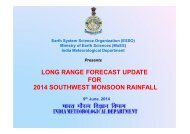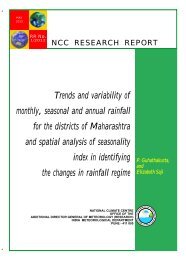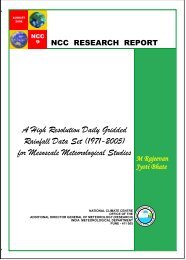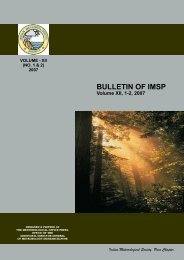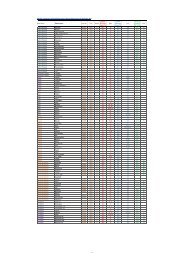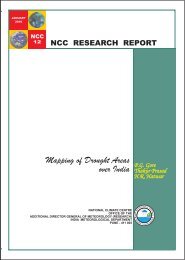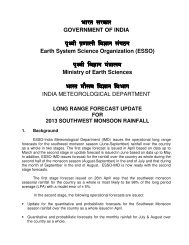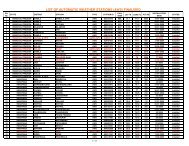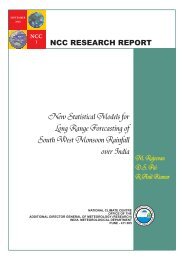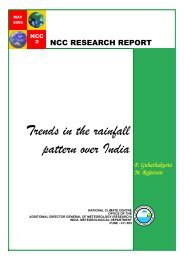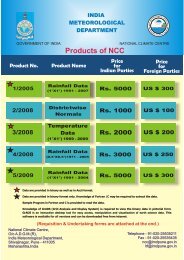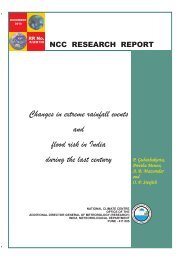5 India Meteorological Department Central Training ... - (IMD), Pune
5 India Meteorological Department Central Training ... - (IMD), Pune
5 India Meteorological Department Central Training ... - (IMD), Pune
You also want an ePaper? Increase the reach of your titles
YUMPU automatically turns print PDFs into web optimized ePapers that Google loves.
• Issue of Satellite bulletins. (2 Hours).• Assessment of T-number of Cyclone from satellite images using Dvorak’s technique(form to be filled up by the trainees). (8 Hours).• Practical Exercises on Use of Satellite derived products for weather analysis andforecasting, generation of products and posting on website. (7Hours)Paper -8 Radar MeteorologyTotal Hours = 20Radar principles.Doppler Radar, Wind profiler, MST Radar, LIDARSScattering of microwaves by precipitation / precipitating particles. Scatteringsphere, Scattering by rain and ice crystals.by aMinimum detectable power, receiver noise, radar equation for a point target, part playedby various parameters in the radar equation. Radar equation for an extended target.Practical importance of radar set constants and the radar cross section. Effect of wavelength,wave lengths commonly used. Types of scans used in weather radar, their merits.Classification of radar echoes.Convective and stratiform types, bright band echo from lightening, tornadoes, squalllines.Study of severe storms and cyclones, quantitative measurement of ZR & M and their corelation.Measurement of rate and amount of precipitation, effect of circular polarization,use of circular polarization in weather radar research, non-precipitating / precipitationechoes, super-refraction, limitations of weather radar.Elementary ideas of cloud physics. Drop size distribution in various types of rain.Relation between drop size, terminal velocity, rate of rain fall and radar echo intensity.Study of Disdrometer and its application.Doppler radarDoppler radar principles and its limitations. Doppler principle of velocity measurement,unambiguous velocity and range. Doppler dilemma. Spectrum width. Introduction toDWR (Physical visualisation/inspection), RAINBOW workstation.Principles of dual polarized doppler radar. Advantages over conventional doppler radartechniques.Doppler radar base products and derived products.1. Introduction to reflectivity products and their utilization. PPI, RHI, CAPPI,PCAPPI, MAX, VIL, HHW, EBASE, ETOP, VCUT.2. Hydrological products SRI, VIL, PAC, PRT.12



